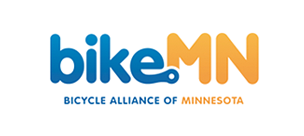This month the Bike Walk Leadership Network explored all things walking safety and encouragement efforts in Fergus Falls and Bemidji Minnesota. Both of our speakers recently completed and graduated from the Walking College, created by American Walks and AARP. Mallory Forseth is an Assistant Transportation Planner at West Central Initiative in Fergus Falls, and Natalie Gille is BikeMN’s Greater Minnesota Program Manager (and host of the Bike Walk Leadership Network webinar!).
If you missed the Webinar, no worries! Watch and listen to this engaging conversation on BikeMN’s YouTube Channel here.
Mallory Forseth – West Central Initiative
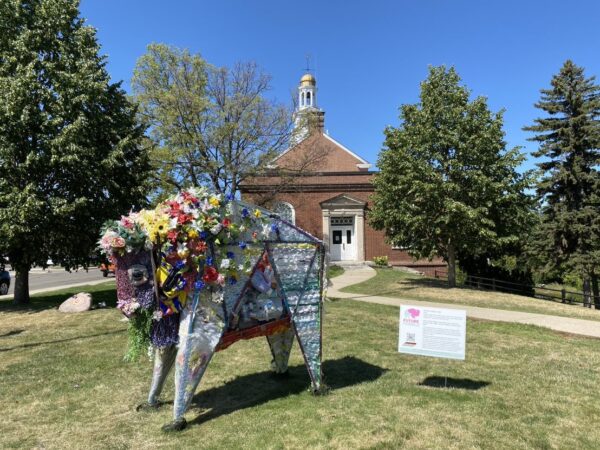
Mallory Jarvi is an Assistant Transportation Planner at West Central Initiative in Fergus Falls and shared that in her current role, she does a lot of work with Safe Routes to School. Becoming a Walking College Fellow was a natural extension of her education to promote walking and safety. As part of the Walking College experience, a walking action plan was created for downtown Fergus Falls.
Mallory’s goal was to encourage visitors to downtown Fergus Falls to walk between stores, popular sites, and new sites in Fergus Falls. An important element of this campaign was installing ‘Walk Your City’ signs that described distance in terms of time. Mallory noted that Wayne Hurley and Patrick Hollister, who have both been speakers with the Bike Walk Leadership Network Webinar, had this idea a few years ago but lack of funding halted progress. Through the Walking College, the signs could be reshaped to fit the current needs of residents in Fergus Falls and highlight new destinations like a pavilion, playground, and more.
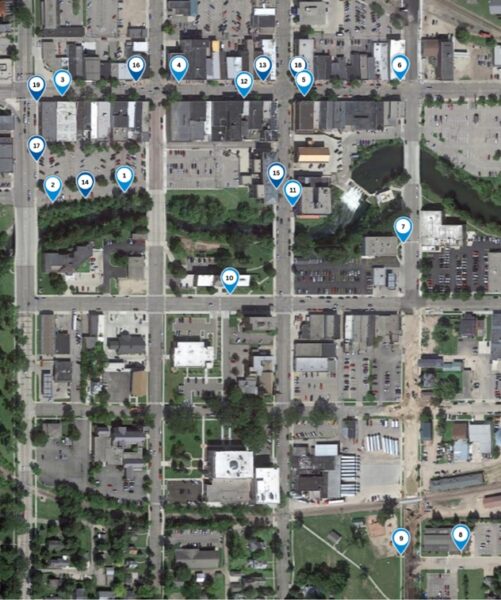
The effort is not without support, too. AARP, West Central Initiative, SignWorks, Pedal Fergus Falls, the City of Fergus Falls, and American Walks collaborated on this project. The signs are also going to be designed by a local artist. After the signs are installed, a walk audit will be done with community members from Fergus Falls, including Pedal Fergus Falls and the Fergus Falls Pedestrian and Bicycle Advisory Commission. After the walk audit, an evaluation conducted through a survey and an in-person observation day will happen to understand how the public interacts with the signs.
The walking action plan established 19 sites where the temporary signs could go, although Mallory noted if funding is a concern 12 sites would be areas of concern. These twelve areas include highly trafficked areas, like the local children’s museum, library, new park, and areas with offices. After the evaluation and audit period, the team can gather data and present it to the Fergus Falls City Council for permanent signage by 2025.
In closing, Mallory emphasized that little projects can make a big impact. This project, Mallory hopes, can push both visitors and locals a little outside of their comfort zone and help change their perspective from shifting their travel mode choice from driving to walking and biking. Finally, Mallory encouraged participants to connect with their city, local businesses, and other advocates in their community to get a project like this started.
“Encourage outside partners and those who could benefit from walking and biking to work together – work with the city, local businesses, and advocates. Everyone benefits from healthy people and more people walking in their community.”
Mallory Jarvi, West Central Initiative
Natalie Gille – Greater Minnesota Program Manager
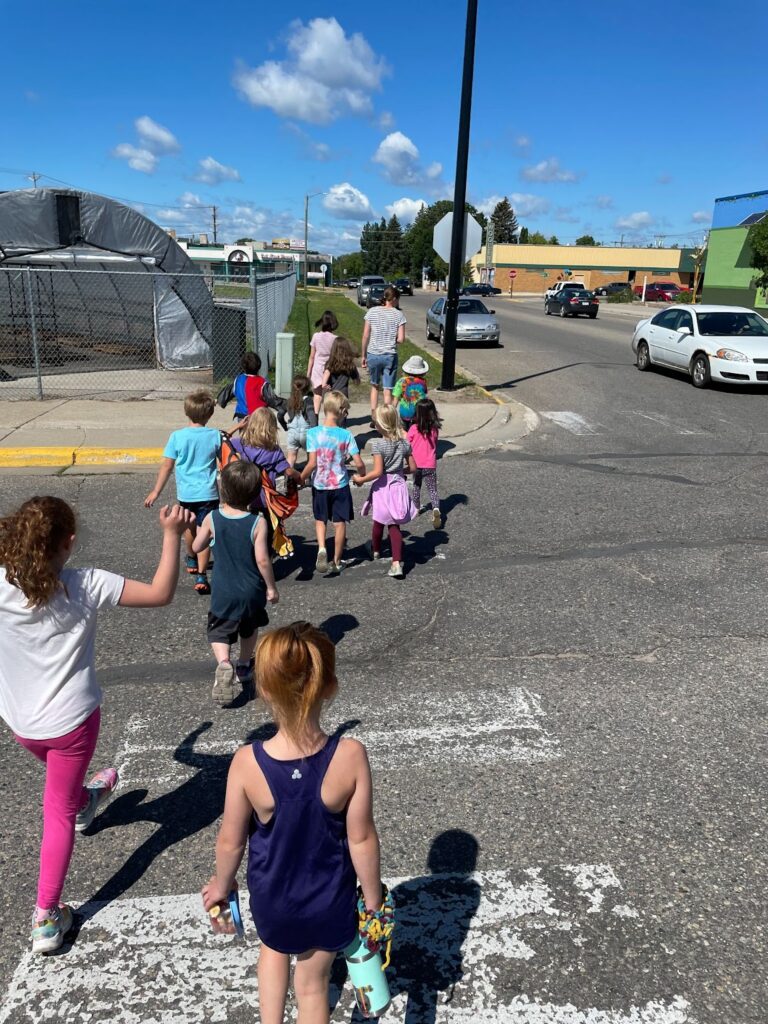
As part of Natalie’s Walking College Action Plan, Natalie wanted envisioned a walking school bus for kids and Bemidji’s aging population. This walking school bus would support greater community connections between youth and the aging population, and encourage more walking in the area.
Using part of the AARP Walk Audit toolkit, Natalie organized a walk audit of a 1 mile stretch between the local elementary school and senior center with students. Throughout the walk, kids commented. onwhat they saw or experienced on the walk, and adults noted any significant challenges like obstacles, debris, or sidewalks in disrepair, the absence of painted crosswalks, and signs of future projects like desire paths, during the walk audit. At the senior center, residents engaged with students and built a foundation for future community connections. The walk audit route featured popular destinations like Paul Bunyan Park, downtown Bemidji, the school, and the senior center near local businesses.
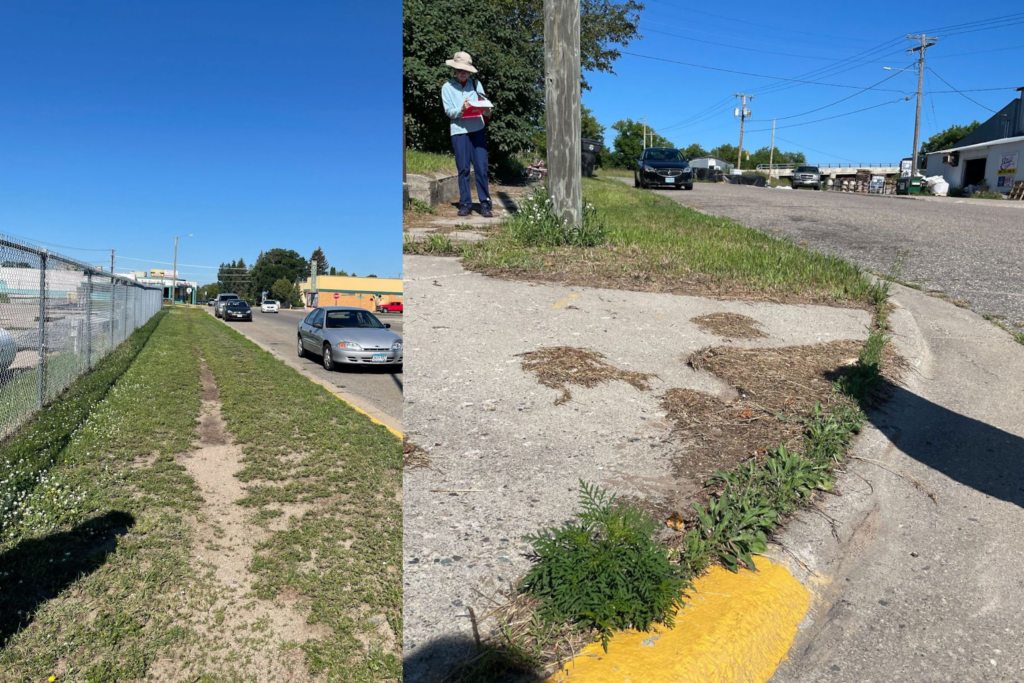
As part of the strategic planning for this project, Natalie organized the walk audit, rallied walking volunteers and student participants, and formalized the route and schedule. Evaluating racial equity components through the strategic planning and goal setting was critical for the Superhero Steppers Walking School Bus. Incorporating strategies to bring these goals to life and noting challenges was also critical in the planning and evaluation of the project. Natalie shared that local partners like city staff, public works staff, and advocates were already engaging in pedestrian encouragement and safety initiatives.
Finally, Natalie shared having performance measures and methods in mind when creating the program is critical. For this project, Natalie’s evaluation criteria included demographic analysis of the population, data on modes of transportation, and counts of participants in the walking school bus. The Bemidji Walking Implementation team had already been doing some work, and Natalie was excited to incorporate the walking school bus into the planning of another pilot demonstration project. Natalie shared participating on the project team enabled her to encourage the demonstration crosswalk to be placed near the elementary school.
As graduates of the Walking College, Natalie and other graduates remain eligible to apply for grant funding from AARP, in addition to the $500 awarded to graduates. Natalie, in collaboration with the Headwaters Regional Development Commission, is directing the awarded funding to create a Superhero Steppers Walking School Bus logo and t-shirt designs to spread awareness of the program at the next Walk to School Day.
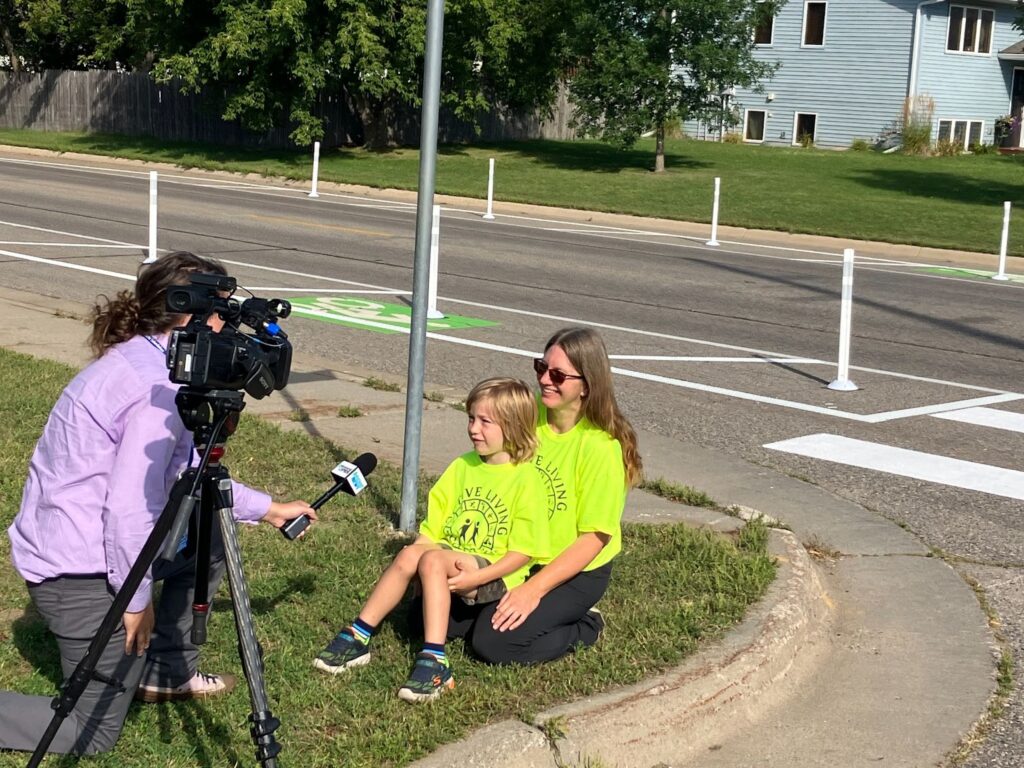
“The most important elements to incorporate in your walking school bus is having a vision, collecting background data, engaging with the community, setting goals, and having performance measures in place to evaluate the success of your program.”
Natalie Gille, Greater Minnesota Program Manager
Closing announcements included a plug for the return of the in person Minnesota Bike Walk Summit on Thursday, February 9th, and a brief legislative update and expected agenda. Learn more and register today!
The webinar also had a special moment of recognition for all of our 2022 Bike Walk Leadership Network speakers and participants for a wonderful year of learning, engagement, and advocacy together!
